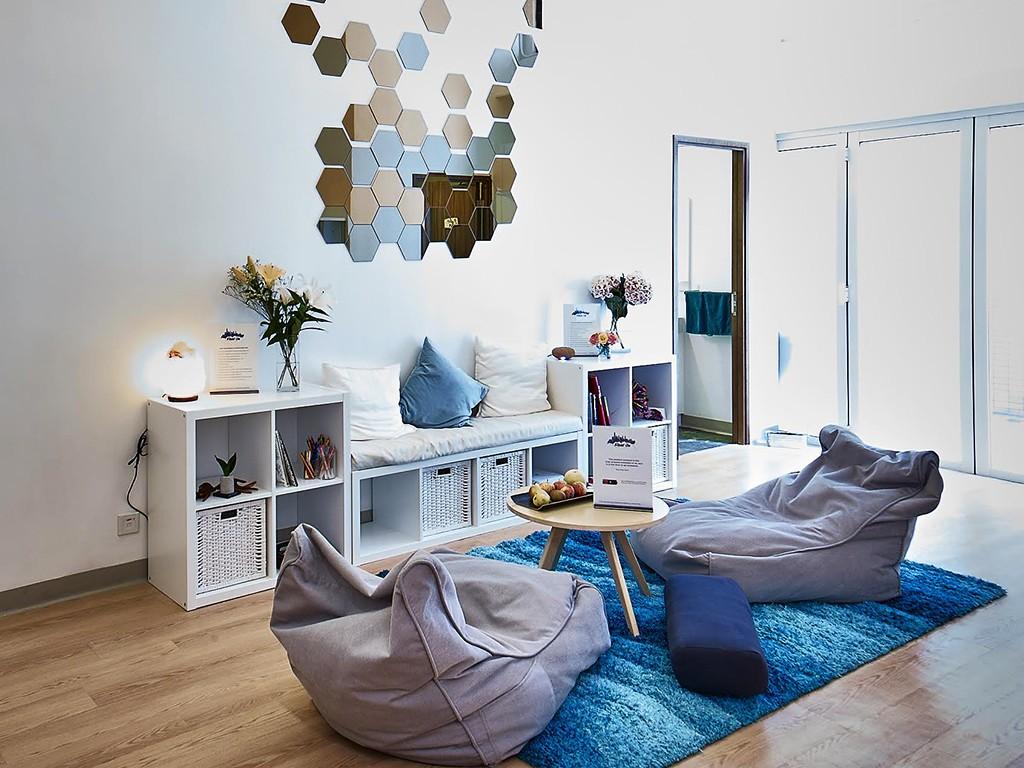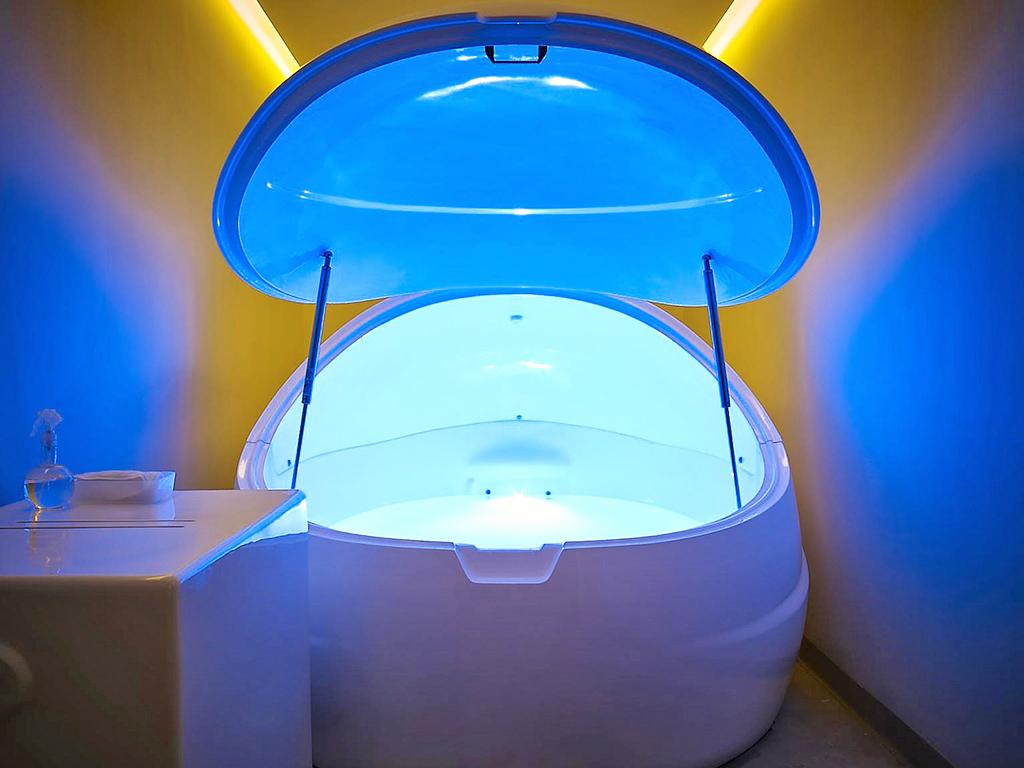6 Mins Read
From the aerial yoga craze to cross-fit in the park to every possible kind of boutique studio workout, there are no shortages of places and practices to burn off steam in our crazy city. We are all getting leaner and longer, fitter and stronger- many of us are now familiar with previously niche regimes from barre to boxing. But are we getting any less stressed is the million-dollar question? Working out helps us release endorphins, that’s a scientific fact. But like everything in Hong Kong, there is a slight whiff of the competitive, high-intensity, status-waving Hong Kong identity at the core of it all, and we aren’t talking about your abs. What we urban-jungle-dwellers desperately need more of is quietude. Alone time, to think or even just be. A moment to truly let your mind wander. A screen-free space. Some of you may argue that yoga is a form of meditation in itself. On the other hand, being surrounded by 50 sweaty people as they each try to be find their own personal nirvana can make you feel like a stressed sardine! So what’s a relaxation-seeking Hong Konger to do? One mindful Friday afternoon, we found our answer: it’s called floating. Just one hour of this magical experience will transport you into your own personal heaven of silence.

Floating or sensory deprivation therapy (SDT) as those in-the-know refer to it, involves lying naked in a large round enclosed pod filled with 500 kg of epsom salts and body temperature water in an private room. Float On, located in Midlevels on Caine Road, just a few minutes walk from the escalator, is the city’s first sensory deprivation pod center. Owner Dee welcomes you with both her incredibly relaxing aura and a peacefully set up welcome room- think bean bag seating, herbal tea, inspiring book collection. With her surfer-chic meets intellectual hippie vibe, Dee is evidence-enough that whatever is going on in those pods works (she floats at least three times a week). A full session in Float On’s made-to-order ‘Dreampods’ includes 10 minutes of introductory background music to get you to relax and then a five minute tune conclusion to let you know your session is about to be over. You have a shower before you get into the pod, as well as after. The first one is to keep things hygienic in the pods, the latter is to help you get the epsom salts remnants off your skin and out of your hair. The rooms have open rain showers with wooden floors and locally made non-toxic Bathe To Basics hair and body soap (the scents are heavenly, this is one of our favourite local beauty brands). All jewelry, watches, clothing, hair ties, contact lenses, glasses- basically adornments of any kind- must be removed. Once you are clean and ready, you step into the pod-bath and lie back. The sheer volume of salts means you are floating so your head doesn’t really need support but there is a cushion you can use if you prefer to have something under your neck. Ideally you close the pod over you and sit in darkness- but for the claustrophobic among you, there is an option to leave the light on and leave the pod cover half-open.
Flotation therapy is not a new fad. Originally conceived in the 1950s by American neuro-psychiatrist John C. Lilly as a stress relieving journey into deeper consciousness, it masquerades under a few other names such as isolation therapy (does anyone else remember Edwina from the iconic 60s era British TV series AbFab getting her float on almost two decades ago? #weareold), the above-mentioned SDT, as well as restricted environment stimulation technique (REST). The benefits are numerous. Firstly, just the act of being away from noise & light pollution and your phone is a stress-reliever in itself (Dee confiscates your phone under the guise of charging it, but really you know she knows that many Hong Kongers would try to type whilst floating. She is right.) Secondly, the loss of space and time structure allows your brain to go into a meditative state, allowing your mind to wander in a semi-dreamlike space. There is a great deal of research on the restorative properties of achieving this state once a day. Most of us can’t reach this through sleep because of the many light, noise and mental distractions that our modern schedules Beyond that, soaking in epsom salts, aka magnesium chloride, is incredibly good for you. Magnesium is a vital mineral that most of us are greatly lacking- it helps regulate our circadian rhythms, which in turn have an impact on your sleep schedule and your metabolism- absorption through the skin is thought to be the best way to get your fill. Magnesium is also great for soothing sore muscles, lessening fluid-retention and helping with the discomforts of being pregnant (Dee says many of her clients are mums-to-be who cannot get comfortable anywhere but the floating pod). Like many healthy pursuits, floating is a stepping stone to smarter health choices. The logic goes that taking time out will push you to eat better, work out more, stretch for longer. Whether or not that applies to you depends on the kind of person you are but there is no doubt that an hour of floating lowers stress levels, helping to regulate your over-taxed adrenals and hopefully releasing some endorphins along the way. In the end, exercise, better nutrition and spas all take care of your body, but what’s taking care of your mind?
So how did it feel, you ask? It was pretty incredible. There was an overwhelming lightness, and what I imagine to be a womb-like sensation that enveloped the body- think a water hug at the perfect temperature. I did wonder about the temperature (which is set to 34 degrees Celsius), would I be cold, would I be hot? Since you are floating, the top layer of your upper body is exposed out of the water, which was my only small gripe with the entire experience. It would be great if somehow your entire body up until the chin was covered by the water but I did get used to it pretty quickly. Any worries of feeling shut-in were unfounded. I was far more comfortable than I thought I would be. You really do float and your neck requires no extra support (I thought I might miss my trusty Tempurpedic pillow- I didn’t). Interestingly, knowing that my phone was off-limits was helpful (any entrepreneurial takers for a phone-kidnap service for screen-addicted yupsters?)- I stopped thinking of task-lists and to-dos and projects and really drifted into free thought. I have no idea what I thought about, which I guess is kind of the point. I loved the darkness too- I am one of those people who gets up in the middle of the night to unplug a clock with flashing digits- so it was truly special to be spared the glares and shines and flickers. I was surprised by how much I enjoyed the quiet. There is something so luxurious about a lack of noise in a world where it feels like everyone and everything is constantly yelling. The rest of the day, I was in a contented daze, and the world (and my life) had lost its stressful urgency. That night, my slumber was deep and restorative. Float On, I will be back!
Float On Hong Kong, Caine Road, Midlevels, +852 25482844, info@floatonHK.com. Email, call or book your floating using their online booking system. A single 60-minute float costs HKD 630, packages bring that number down. They also offer 45-min and 90-min sessions.





